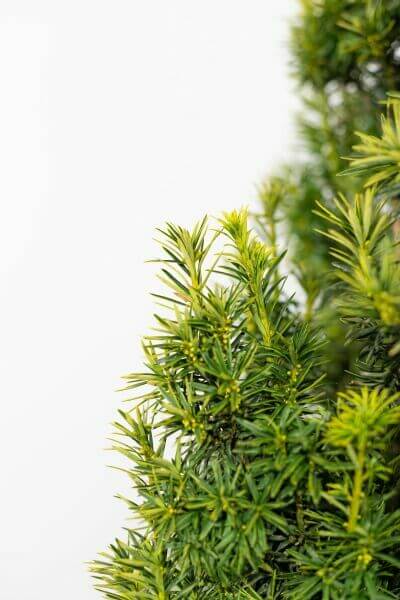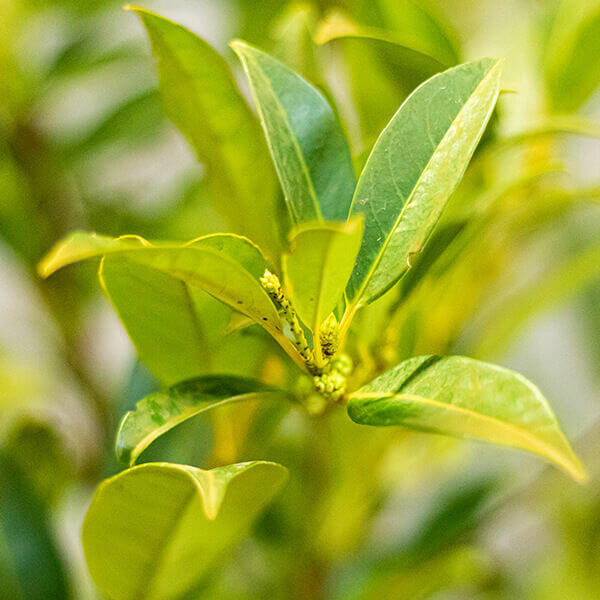Hedge Plants For Wildlife Corridors
Hedge Plants For Wildlife Corridors
Blog Article
Best Hedge Plants For Screening
Boost your garden's allure with lush hedge ranges such as Yew (Taxus), Thuja, Laurel, Photinia, and Bamboo, commemorated for their structural stability and ecological advantages.
Yew and Thuja supply evergreen protection and winter season strength, while Laurel provides rapid development and broad, fragrant leaves.
Photinia includes seasonal appeal with its vibrant red foliage, and Bamboo lends a low-maintenance, tranquil atmosphere.
These hedges improve air quality, lower sound, and create tranquil, personal spaces.
Correct planting, spacing, and maintenance make sure vigorous growth and eco-friendly harmony.
Check out how these lush ranges can elevate your garden's appeal and well-being.
Secret Takeaways
Change Your Garden With Lush Hedge Ranges
- Select Yew for its thick, evergreen growth and unrivaled longevity.
- Go with Laurel for its fast development and broad leaves, making sure fast personal privacy.
- Select Photinia for its lively seasonal foliage, which turns a striking dark red.
- Use Bamboo for a low-maintenance, winter-hardy hedge with visual appeal.
- Space plants 2-3 per meter and prune routinely for optimum growth and health.
Popular Hedge Plants
When transforming a garden with lavish hedge varieties, it's necessary to consider popular hedge plants such as Yew, Thuja, Laurel, and Photinia due to their distinct attributes and advantages.
Yew (Taxus) is highly respected for its durability and thick, green growth, making it a prime option for enduring landscapes.
Thuja is noted for its evergreen foliage and robust winter season strength.
Photinia adds seasonal vibrancy with red leaves that darken in time, developing vibrant visual appeal.
Laurel uses quick growth and fragrant, broad leaves, perfect for fast personal privacy.
Additionally, Bamboo is an outstanding option for atmosphere, offering a low-maintenance, winter-hardy option that improves the garden's aesthetic with its sophisticated, swaying walking canes.
These choices cater to a variety of horticultural needs and preferences.
Benefits of Garden Hedges
Garden hedges offer a wide variety of advantages, making them an important addition to any landscape. These natural barriers are economical to carry out and supply substantial wind security, improving air flow and contributing to noise reduction. The dense foliage of hedges like Thuja and Beech makes sure personal privacy by blocking exposure, producing a remote and tranquil environment.
Hedges likewise play an important role in microclimate regulation, providing a steady environment that cultivates plant growth and reduces temperature fluctuations. Their detailed leaf structures filter contaminants, improving air quality and contributing to a much healthier garden community.
Moreover, hedges stand out in sound reduction, absorbing and deflecting acoustic waves to lower ambient noise levels. This double performance of providing both visual and acoustic personal privacy improves the total serenity and aesthetic appeal of any garden.
Planting and Upkeep Tips
For a successful hedge, meticulous preparation of the planting location is crucial. Make sure the soil has appropriate pH and drain to support strong root development.
Space the plants properly for the chosen types. Water the hedge frequently throughout its initial development phase, changing as needed with seasonal modifications.
Implement a methodical pest control and disease avoidance technique, utilizing chemical or organic treatments when required. Routinely inspect for aphids, termites, and fungal infections.
Apply mulch to retain wetness and reduce weeds. Seasonal pruning promotes thick development and air blood circulation, vital for plant health.
Following these guidelines will help you cultivate a lively, well-kept hedge that improves the appeal of your garden.
Spacing and Trimming Guidelines
Spacing and Cutting Standards
Proper spacing and trimming are important for cultivating healthy, aesthetically appealing hedges. Adequate spacing ensures each plant receives adequate nutrients, light, and air flow.
Follow these standards for optimum hedge maintenance:
- Spacing: Position hedge plants 2-3 plants per meter to encourage robust growth.
- Pruning Methods: Regular pruning is necessary for keeping wanted hedge height and shape. Cut brand-new development in summertime and cut down older wood throughout winter season.
- Seasonal Care: Change cutting schedules and approaches according to seasonal requirements to guarantee plant health.
- Hedge Height: Routinely screen and trim to maintain the desired hedge height and achieve consistent aesthetics.
Abiding by these steps will ensure your hedge prospers, enhancing both the appeal and functionality of your garden.
Picking the Right Hedge
Picking the Right Hedge
Choosing the suitable hedge involves evaluating aspects such as fully grown height, foliage density, and environmental resilience. Successful hedge plant selection needs comprehending each types' development attributes and site-specific flexibility.
For instance, Yew (Taxus) offers exceptional longevity and thick growth, while Thuja is notable for its winter season resilience. In addition, considering upkeep requirements is essential; fast-growing types like Laurel or Privet demand regular cutting, whereas low-maintenance options like Bamboo or Ivy might be more suitable for those seeking very little upkeep.
Ecological elements such as soil type, light availability, and moisture conditions must also direct the selection process. This mindful method makes sure the chosen hedges will prosper, offering both practical and aesthetic advantages to the garden landscape.
Shipment and Planting Guidance
To guarantee your hedge plants thrive, they must be provided by specialized couriers and planted immediately upon arrival.
Follow these essential actions for effective planting:
- Soil Preparation: Enrich the soil with raw material to enhance drain and nutrient content.
- Planting Depth: Produce a trench two times the width and equivalent to the depth of the root ball.
- Watering Techniques: Water thoroughly after planting, keeping the soil consistently damp however not filled.
- Mulching: Use a layer of mulch to retain moisture and reduce weeds.
Consumer Assistance and Service
Given the essential role of timely assistance in horticultural pursuits, our client assistance group is offered 6 days a week through telephone, e-mail, and social media to offer expert guidance and quickly attend to any issues. Their devotion to fast action times ensures customer satisfaction by dealing with queries associated with plant health, ideal planting techniques, and upkeep schedules.

-------------------
Within 24 hours
This thorough support system, reinforced by an outstanding 9.3/ 10 client ranking, highlights our dedication to enhancing the gardening experience for each customer.
Regularly Asked Concerns
How Long Does It Take for Hedge Plants to Establish?
Hedge plants generally require one to three years to become fully established, with the exact duration varying by species and growing conditions.
Effective care throughout this important duration is necessary for robust development. Constant watering, alert weed control, and proper fertilizer application are essential in promoting strong root advancement.
For example, fast-growing species like Laurel may establish faster, while slower-growing ranges such as Yew may take longer. Persistent maintenance speeds up the establishment procedure, leading to thick and healthy hedges.
What Are the Best Hedge Plants for Privacy?
The question of the very best hedge plants for personal privacy includes assessing evergreen and deciduous choices.
Evergreen hedges like Thuja, Laurel, and Cypress provide year-round coverage, making sure constant privacy.
On the other hand, deciduous hedges such as Beech use seasonal privacy, shedding leaves in chillier months.
Key upkeep ideas for privacy hedges include routine trimming, fertilizing in spring, and proper spacing-- normally 2 to 3 plants per meter.
Furthermore, consistent watering and thorough weed elimination are crucial for promoting healthy, thick growth.
Can Hedge Plants Attract Wildlife to My Garden?
Yes, hedge plants can draw in wildlife to your garden by providing necessary benefits like shelter, food, and nesting websites, thus enhancing regional biodiversity. For example, yew, holly, and laurel are exceptional for drawing in birds, while ivy supports a range of bugs.
Nevertheless, it is very important to keep in mind that there are some drawbacks, such as increased upkeep to manage insects and routine upkeep. Thoroughly selecting and preserving hedge ranges can help stabilize these benefits and disadvantages, ultimately cultivating a vibrant and sustainable environment in your garden.
Are There Any Blooming Hedge Plants Available?
Yes, there are flowering hedge plants readily available that can enhance the charm of your garden.
For instance, Elaeagnus, also called Olive Willow, produces fragrant white flowers in the fall, adding a touch of beauty.
Photinia, another popular option, showcases vibrant red leaves that develop into an abundant green, developing a vibrant visual effect throughout the seasons.
To guarantee these plants grow, it's important to practice appropriate pruning strategies and seasonal upkeep, such as trimming new growth in the summer and cutting back in the winter.
These steps will assist preserve the health and visual appeal of your blooming hedges.
How Do I Prevent Bugs in My Hedge Plants?
To avoid pests in hedge plants, employ natural pest control click here methods and preserve proper hedge care. Present advantageous bugs like ladybugs, which take advantage of hazardous insects, to produce a well balanced community.
Routinely inspect your hedges for signs of invasion and without delay get rid of any afflicted parts to avoid the spread. Guarantee the health of your hedges by applying balanced fertilizers and supplying sufficient water.
Use mulching to keep soil moisture and proper spacing to reduce plant stress and promote robust development. These practices jointly help in lessening insect issues and maintaining a healthy hedge.
Conclusion
In essence, picking the best hedge varieties such as Yew, Thuja, and Laurel can transform any garden into a serene sanctuary. These plants offer year-round greenery, boost visual appeal, and offer practical advantages like noise reduction and wind defense.
Appropriate planting techniques, precise spacing, constant watering, and seasonal trimming are essential for ideal growth.
Dependable delivery services and professional customer assistance guarantee a seamless experience from purchase to planting, making it easier than ever to raise your outdoor area.
Garden hedges provide a multitude of advantages, making them a valuable addition to any landscape. These natural barriers are cost-effective to execute and provide substantial wind protection, boosting air flow and contributing to sound reduction. The thick foliage of hedges like Thuja and Beech ensures personal privacy by blocking exposure, creating a secluded and peaceful environment.

Pruning Techniques: Regular pruning is necessary for preserving preferred hedge height and shape. Trim brand-new growth in summer and cut back older wood throughout winter.
Report this page